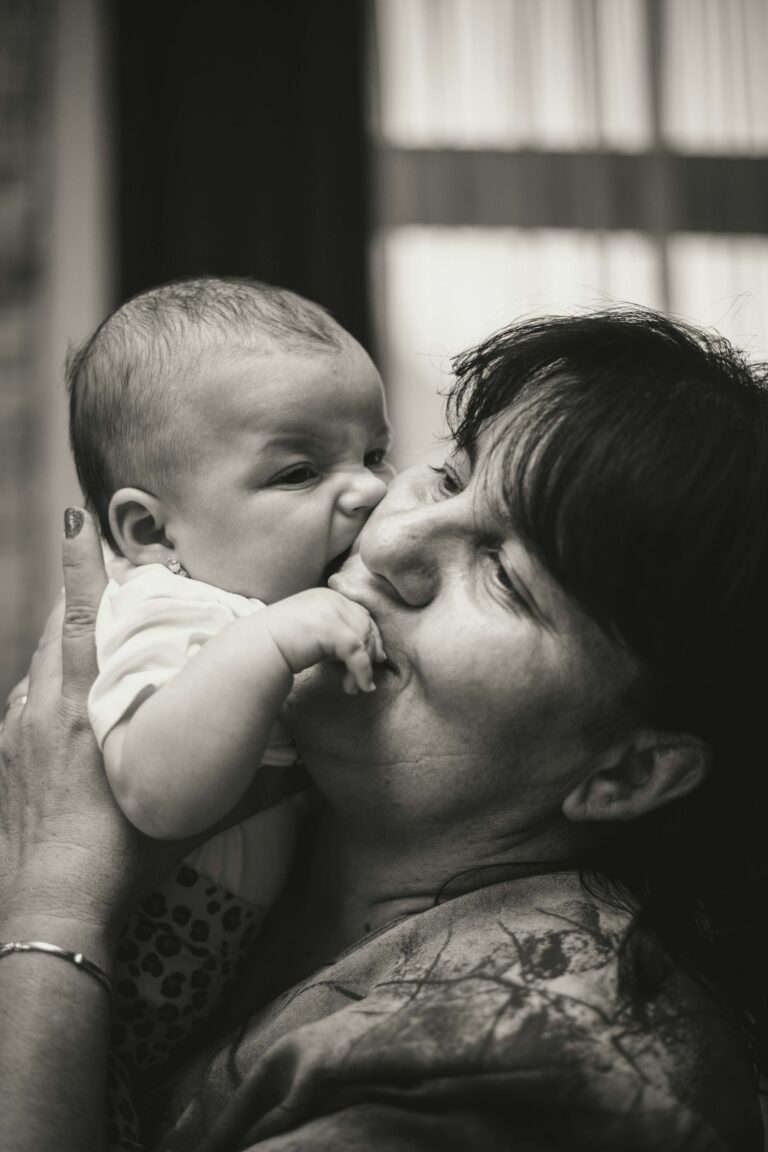A preterm baby—one who arrives before reaching 37 weeks of gestation—reshapes the parental path in an instant. The surge of emotions, layered with anxiety, hope, and anticipation, is palpable. Many parents find themselves confronted with unfamiliar medical jargon, machines brimming with blinking lights, and the sight of their child, often much smaller than expected, in a world apart from the one they envisioned. How do you foster warmth, love, and health in this delicate chapter? What decisions truly make a difference for a preterm baby, and how can families nurture both physical and emotional growth amidst uncertainty? Here, you’ll find clear, medically grounded answers, approaches to daily care, guidance on feeding and sleep, practical tips for reducing infection risk, and the science behind a preterm baby’s unique needs. Together, let’s create a space for confidence to grow—even in fragile hands.
Preterm baby: key facts and practical first steps
A preterm baby is defined as any infant born before 37 completed weeks of pregnancy. The spectrum ranges from extremely preterm (under 28 weeks) through very preterm (28–32 weeks), moderately preterm (32–34 weeks), to late preterm (34–36 weeks). Medical teams rely on careful assessment, using gestational age, birth weight, and the baby’s immediate needs to guide intervention. Why this matters? The earlier a preterm baby arrives, the greater the chance of medical complications—underdeveloped organs, difficulties with respiratory function, temperature regulation, and a heightened susceptibility to infections.
Right after birth, many preterm babies require care in a highly specialized environment known as the Neonatal Intensive Care Unit (NICU). This advanced setting is designed for temperature control, continuous monitoring of vital signs, and precise nutritional support. Skin-to-skin contact, also called kangaroo care, isn’t merely a buzzword; it’s scientifically associated with more stable heart rates, improved growth, and a boost to parental confidence. Feeding—sometimes through a tube, sometimes via a carefully orchestrated combination of pumped breast milk and formula—becomes a daily rhythm. Defense against germs is a top priority; the preterm immune system lacks the robustness of its term counterparts, prompting strict hygiene and vigilant screening for infections.
The journey out of the NICU is a turning point. When a preterm baby finally stabilizes—breathing independently, maintaining body temperature, and demonstrating steady weight gain—the hospital team gradually shifts focus to home readiness: training parents to recognize subtle signs of distress, enabling responsive feeding, and scheduling early follow-up visits. Relief overshadows anxiety, but questions linger on every front: Can our home environment support this fragile transition? What happens if my preterm baby gets sick?
Preparing for discharge: building bridges between hospital and home
Returning home with a preterm baby often evokes a blend of elation and apprehension. How do you recreate the consistency and security of the NICU at home? Proactive planning is the keystone. It’s highly advisable to connect with a healthcare professional before discharge—sometimes a pediatric nurse coordinates ongoing care, answers urgent questions, or organizes additional support if oxygen or tube feeds are still necessary.
The familiar chaos of home—a tapestry of siblings, pets, sudden noises—contrasts sharply with the clinical hum of the NICU. Preterm babies, accustomed to machines and medical staff, may become unsettled, their cries more frequent, their sleep unpredictable. Patience is a parent’s greatest ally here. Bonds are often reignited in increments, through gentle touch and reassuring presence. Simple routines rebuild security; your calm, attentive gestures become the safe harbor your baby craves.
Skin-to-skin contact remains as vital as ever. Medical evidence consistently shows it nurtures temperature control and emotional attachment. Heightened risk of infections does not vanish overnight: hand hygiene, avoidance of crowded places, and a smoke-free home are essential defense strategies, especially in the delicate first months.
Navigating daily life: sleep, feeding, and routines
Shaping sleep: finding rhythm in uncertainty
Sleep is a cornerstone of development, but it’s easily disrupted by a premature start in life. A preterm baby should sleep in the parent’s room (but never in the same bed), ideally in a cot or bassinet that offers suitable support. Always place your baby flat on their back, on a firm mattress—pillow and duvet-free. This position reduces sudden infant death syndrome (SIDS) risk, a concern magnified for preterm infants with immature neurological systems. Wearable blankets and light swaddling (ask your nurse for safe, up-to-date techniques) provide the containment many preterm babies find soothing.
Temperature matters: aim for 19°C (around 66°F). Quiet, dark spaces can feel unfamiliar after the constant stimuli of the NICU, sometimes making silence uncomfortable. A gentle nightlight or soft lullaby can bridge the transition. Remember: the natural sleep-wake cycle may take several weeks to emerge in a preterm baby.
Feeding your preterm baby: every drop counts
Nourishing a preterm baby demands adaptability and observation. Whether breastfeeding, expressing milk, or using a specialized formula, responsive feeding remains center stage. Preterm infants have minuscule stomachs and immature digestive tracts, requiring more frequent, smaller feeds—sometimes every 2 to 3 hours around the clock.
Watch for subtle hunger signals: rooting, sucking, flexed limbs, or hands near the mouth all signal readiness. Don’t insist on finishing a bottle if your baby resists; forced feeding can be distressing and counterproductive. Regurgitation, constipation, and feeding intolerance crop up frequently, raising concerns about calorie intake and growth. Early involvement of a pediatric nurse or lactation consultant can solve many problems before they snowball. For those using formula, consult your pediatrician on the duration of preterm infant formula—these blends are specifically enriched with calories, protein, and essential micronutrients.
Hygiene and infection protection: building a barrier
A commitment to hygiene isn’t mere over-caution. The immune immaturity of preterm babies opens the door to potentially serious respiratory and digestive infections. Consistent, thorough handwashing before every touch—diaper changes, feeds, cuddles—helps lower risk. Masks are sensible if anyone in the home is unwell. Outdoor walks are welcome if weather-appropriate clothing shields against temperature extremes, but steer clear of crowded or enclosed public areas during respiratory virus season. Above all, a smoke-free environment isn’t negotiable; tobacco smoke significantly raises the risk for bronchiolitis and other breathing issues in this population.
Recognizing preterm baby challenges: a balancing act
Preterm babies harbor unique characteristics you’ll quickly learn to recognize: thin, nearly translucent skin, low body fat, and smaller stature. Medical teams vigilantly watch for respiratory distress syndrome—marked by labored breathing—and episodes of apnea, where breathing pauses. Weak suck-swallow reflexes can frustrate feeding attempts, prompting alternative strategies (such as tube feeding) until coordination improves.
Temperature swings are no small worry—limited insulation means preterm babies are prone to both hypothermia and overheating. Jaundice, anemia, necrotizing enterocolitis (a severe digestive condition), and cardiac concerns like patent ductus arteriosus are watched for relentlessly. Regular screening for retinopathy of prematurity (an eye condition unique to this group) and subtle hearing loss ensure early intervention.
What can parents do? Become adept at noting changes: noisy breathing, color shifts, poor feeding, or sudden lethargy. Build a partnership with your care team—your close observations, combined with their expertise, support your baby’s ongoing stability.
Journey through the NICU: immediate stabilization to independence
Stabilizing a preterm baby after birth is a rapid-fire sequence. Maintaining warmth—using heated mattresses or incubators—takes precedence. Continuous tracking of oxygen saturation, heart rate, and temperature prevents sudden downturns. For those whose lungs struggle, CPAP, oxygen therapy, or even ventilator support, paired with surfactant therapy (a medicine that enhances lung expansion), are deployed. Medications such as caffeine citrate are used to stimulate irregular breathing patterns.
Nutrition progresses from parenteral nutrition (IV feeding) to tube feeding, then, when possible, oral feeding. Kangaroo care is encouraged as soon as the baby is stable enough, with compelling research confirming benefits for temperature, immunity, and neurodevelopment. The NICU’s primary aim is to help the preterm baby reach a point where breathing, feeding, and temperature stabilization occur naturally—paving the way for home transition, underpinned by thorough parental education on daily care and emergencies.
Innovations and medical advances: a shifting landscape
The regimen of supportive interventions is ever evolving. Antenatal corticosteroids, which mothers at risk of early labor often receive, fortify fetal lung maturity. Advanced non-invasive ventilation strategies—such as bubble CPAP—and regenerative techniques, including stem cell therapy for lung repair, are the subject of ongoing research. Antibiotics cushion against early infections, while precise treatment for cardiac anomalies (like the use of prostaglandin inhibitors for closing heart vessels) have reshaped prognosis.
Medical teams use preterm growth charts—like the Fenton or Intergrowth curves—to tailor nutritional and developmental support, accounting for the corrected gestational age rather than the actual birthday. This is vital for tracking progress and predicting when a preterm baby might “catch up” with peers.
Tracking growth and development: milestones recalibrated
Growth is measured meticulously in a preterm baby—daily weights, weekly length, and head circumference. Medical teams use specialized charts reflecting the expected trajectory for preterm infants. Milestones are measured not by the standard calendar, but by a corrected age (counting from the estimated date of delivery, not their birthday). Parents often ask: “Why does my baby seem behind?” The answer: in most cases, these differences disappear by age two, as the brain and body catch up.
Neurodevelopmental progress is frequently led by formal assessments, including the Bayley Scales and parent-led questionnaires. Early physical, occupational, and speech therapies may be introduced proactively. Frequent bloodwork checks for anemia and metabolic issues, while regular hearing and ophthalmologic screening aim for early identification of challenges—giving intervention the best chance of success.
Long-term health and the arc of support
Long after discharge, some preterm babies face continuing hurdles. Risks include speech delay, learning difficulties, behavioral differences, and chronic conditions such as asthma or even cerebral palsy. Yet, early intervention services—including regular physical, occupational, and speech therapies—empower families to address delays swiftly. Ongoing medical oversight (diet, growth, vaccinations, and infection prevention) combine for holistic care.
Community resources—parent groups, home visiting nurses, and multidisciplinary clinics—offer both emotional and practical support. Long-term trust between parents and medical providers helps foster resilience in children and confidence in families, no matter the path ahead.
Everyday life: structure, rituals, and nurturing connection
Caring for a preterm baby at home means frequent feeds, vigilant record-keeping (wet diapers, weight gain, and mood shifts), and an abundance of patience for slow, but steady, progress. A tranquil, cozy environment can relieve stress for everyone. Engage with your preterm baby—play, sing, speak softly—these moments support both brain growth and your bond.
Regularly scheduled developmental, hearing, and vision assessments offer reassurance that no concern goes unnoticed. Don’t hesitate to reach out; health teams answer questions big and small. Embrace peaceful moments for cuddling and rest—both you and your baby need these as much as every medical intervention.
Causes, warning signs, and risk factors for preterm birth
Preterm birth arises from an intricate web: sometimes it’s spontaneous labor with no clear warning, sometimes sparked by infections, maternal conditions like preeclampsia or diabetes, placental complications, or multiple gestation (twins or more). Lifestyle choices—tobacco, alcohol, drug exposure—play a role, as do short pregnancy intervals, high stress, or poor prenatal care. Assisted conception techniques have also increased the global incidence.
Warning signs? Regular contractions, low back pain, changes in vaginal discharge (especially watery or bloody), plus maternal ages at the extremes—all warrant prompt assessment. Prior history of preterm birth or certain ethnic backgrounds may further elevate risk.
Preventing preterm birth: ongoing research and hope
Medical science continually searches for strategies that can predict and prevent preterm labor. Innovations span biomarker testing, advanced ultrasounds, and even at-home digital monitoring for women at risk. In selected cases, hormonal treatments (progesterone supplementation) and cervical cerclage—a stitch to support a weak cervix—reduce risk. Improved prenatal nutrition, robust infection prevention strategies, and stress reduction initiatives show promise in lowering rates at the population level. International health programs increasingly focus on maternal well-being to stem this challenge before it begins.
Research, advances, and global collaborations
Progress in neonatal medicine has transformed survival and developmental outcomes for preterm babies worldwide. Access to kangaroo mother care, improved nutrition protocols, less aggressive ventilation, and targeted therapies continue to shift the balance from mere survival to thriving. Global health organizations like the World Health Organization invest in maternal and newborn health, closing the outcome gap between resource-rich and underserved areas.
These advancements rest not just on laboratory breakthroughs, but also on the lived experiences of families, feedback from parent communities, and an ongoing commitment from healthcare teams everywhere to continuously improve the quality of care for every preterm baby.
Key takeaways
- A preterm baby requires careful, evidence-based intervention—especially when it comes to nutrition, infection prevention, and developmental supports.
- Specialized care, both within the NICU and at home, builds the foundation for long-term health and resilience.
- Skin-to-skin (kangaroo) care and personalized feeding approaches are linked to better survival, growth, and emotional bonding.
- Recalibrated milestones and regular monitoring empower parents to support optimal neurodevelopment, no matter the starting point.
- Community, medical innovation, and early intervention combine to improve outcomes year after year.
- Whenever questions arise, resources and professionals are available to support every step. For individualized advice and free child health questionnaires, you can download the Heloa app.
By understanding your preterm baby’s special requirements, advocating for tailored care, and harnessing the power of modern medicine, every parent can help transform early uncertainty into a story of growth, discovery, and connection.
Questions Parents Ask
How can I improve my preterm baby’s weight gain?
If your preterm baby is gaining weight slowly, there are supportive options to help their growth. Offering breast milk—often fortified to meet higher nutritional needs—can provide natural immune support and key nutrients. Sometimes, donor milk or specialized formula may be used if needed. Close monitoring by your healthcare team ensures feeding plans and volumes are adapted to your baby’s progress. Sometimes, gradual increases or a mix of oral and tube feedings might be advised. It is important to address any digestive or medical issues early, as these may affect weight gain. Don’t hesitate to rely on neonatal dietitians and lactation experts—together, they will help create an individual approach to give your baby the very best start.
Can preterm babies go outside?
Absolutely—many preterm babies can enjoy getting fresh air! It’s simply a matter of timing and taking precautions. Before heading outdoors, check with your pediatrician; together, you’ll consider your baby’s age, medical condition, and local weather. Choose calm, smoke-free areas and avoid crowds, especially during cold or flu season, to limit exposure to infections. Dress your baby comfortably for the temperature, and keep outings short at first. Taking these small steps allows your family to savor safe and pleasant moments together outside.
Is it possible for a preterm baby to have normal development?
Yes, many preterm babies go on to reach similar milestones as their peers. While early challenges may arise, especially with growth, coordination, or language, early interventions and regular follow-up can make a real difference. Your care team will guide you on developmental activities and, if needed, suggest supportive therapies. Each child’s journey is unique—progress may be gradual and adjusted for their corrected age—but with lots of encouragement and individual attention, preterm babies can thrive, discover the world, and build wonderful connections with those who love them.
Further reading:









